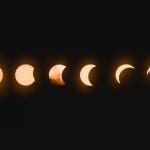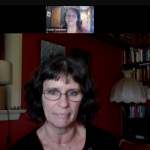The Goddess Brighid is one of the oldest and most popular Celtic deities. She is a paragon meaning that she is used as a standard to live up to or for mortals to be compared with.
She has many associations that are well known but rarely is she seen in one of her oldest forms: As the goddess of the dawn. She seems to be a combination of both the *Westya the hearth-goddess and Prija Divah, the dawn goddess.
When dawn proclaimed the triumph,
With Bride the peerless maid,
The winds of violet sweetness rose and sighed,
No conquest is compared,
To love’s transcendent joys that never fade.
(Mackenzie, 1917)
How do we know this? The academic field of Comparative Mythology tells us a few things about the matter. Let’s review the evidence.

The Indo-European Dawn Goddess
The Celtic language family or proto-Celtic itself most likely originated with the Urnfield culture, which has its origins as a sept of the Corded Wares(CW) culture. The CW culture stemmed from the Indo-European Yamnayans and also seeded Germanic and Slavic cultures. Half the world speaks Indo-European languages which originally spread through trade contact, metallurgical tech sharing, (often probably forced) migration and war. As people of the CW culture spread, they took their gods with them. Thus, many of the gods in our polytheism came from Proto-Indo-European ones. As cultures spread and merge with the local population, these gods mutate and change.
The dawn goddess seems to be one of the better-preserved deity roles. It is through comparison, that we can rebuild missing pieces of our cosmogony. To find a dead religion’s missing organs so we can Frankenstein it back to life, we need to look at the organs of the dead religion’s relatives for possible donors. How do we know what to look for?
J.P. Mallory gives us a measurement from linguistics that we can cleverly apply to other sets of information. He says to know if a word was Proto-Indo-European or not, it must have cognates in at least two European IE cultures and one Asiatic IE culture.
We can also use this information to check if a concept is Christian or not, in part or wholly. Greece or India, for example, are places that had their pagan religions well recorded before the introduction of Christianity. If Saint Brighid has a property she shares with Usas and Eos, it can’t be from Christianity, its native.
Let’s give this a shot.
Her Mantle
According to stbrigit.ie, Saint Brighid wanting to start a convent asked the King of Leinster for a certain spot of land that was perfect for all the needs of a convent. He refused but then she asked him only for the amount of land her cloak would cover. He agreed and her nuns began running with the edges of the cloak as it magically stretched out in all directions getting bigger and bigger and she threatened to cover the entire eastern kingdom to punish him for his stinginess to the poor.
He asked her to call her maidens back that he would give her the original land that she had asked for. The Brighid’s brat or mantle traditions are some of the most widely practiced on her feast day. (Danaher, 1994)
Usas is the dawn goddess in India and her name means dawn. She also has a white mantle. Essentially she is jyótir vásana meaning ‘clothed in light’ and are bhadra vástra ‘shining garments’. She also spreads out her garments to the wind (Rgveda 1. 134. 4).
For you do the gleaming dawns stretch their auspicious garments in the distance, into the houses at the rays (of the sun)—their brilliant (garments) at the new rays.
For you will the milk-cow, milking her juice, milk out all good things. You begat the Maruts from the belly—from the belly of heaven. (Rgveda 1. 134. 4)
Homer calls the greek dawn goddess Eos ‘saffron-robed’ and describes her as ‘wearing a fine raiment’. Eos is cognate to Anglo-Saxon Eostre, Roman Aurora, Balto-Slavic Ausra & Ausrine, and Vedic Usas. Saule and her daughters’ raiments are silk, gold, or silver. Sappho describes Eos as being ‘gold sandalled’.
Her Spring Festival
Brighid has well-known associations with Imbolc. Imbolc is the Saint’s feast day. Eos and her Spartan cognate Aos are both associated with the springtime festival Aiorai meaning ‘swings’. Usas is associated with and the first to be called at the New Year’s rite, the Agnistoma which happens in the spring when the Vedic hearth-fire is quenched and relit(Segen, 2015).
The Dawn goddess in the form of a character named Erigeneia meaning ‘Early-born’ hung from a tree in Greek spring festival lore according to Aristotle(West, 2010).
One unsuspecting source from Sparta gives us a tradition of a choir of mumming girls which was led by a representative of Aos whose ‘light’ is effectively ‘bearing witness to us that the sun is shining.’, clearly an act of witnessing the birth of the sun(West). Imbolc traditions also include mumming groups with a ‘Brighid’ at the front of the group.
Helen and Salme are born from eggs and Helen’s beauty is compared to that of the dawn and spring. Springtime egg traditions for Easter and again in May for European May bushes are common not just in Celtic practices.
Swinging lore and customs in spring were very common. At the Vedic holiday, Dolayatra, Krishna swung from a swing. The Greek spring festival Aiorai means swings and we see them for Latium in April. We also see swings in Easter and Midsummer traditions of Balto-Slavic lore. Sometimes the Sun God swings down and captures the female subject of the myth, who has customs involving mortal girls swinging.
Aurora’s festival in her form Mother Matuta was honored for Matralia which was held as late as June 11th at dawn. This festival involved seasonal foods that are most likely solar symbols.
The Anglo Saxon Eostre is the root of the modern word Easter, and Bede places her month and festival right at springtime with the most direct example of a dawn divinity worshiped then.
Birth of the Dawn
Brighid is born to her mother while straddling a threshold at dawn. Usas as the dawn is seen to be continually born though she never dies and is immortal.
The shining one has been born bright-beaming from the dark. (RV 1. 123. 9)
Let the Dawns as they are born help me. (RV 6. 52. 4)
Concerning the Ashvins, yásya yóge duhita jayate Diváh meaning ‘at whose harnessing the daughter of Dyaus is born’ (RV 10. 39. 12).
The Ashvin’s, the Twin horse-sons of *Dyeus, pull a chariot ‘at whose harnessing the daughter of Dyaus is born’ (RV 10. 39. 12).
But, likely, Usas was also seen as the foster-mother or midwife of the sun. At a minimum, she was seen sometimes as the direct mother of the sun. M.L. West tells us that painted eggs in bushes are solar symbols. And Eostre who gives her name to Easter is the Dawn Goddess in Britain.
Usáso vibhatıh ájıjanan Suriyam, ‘the shining Dawns have given birth to Surya’(West, 2010).
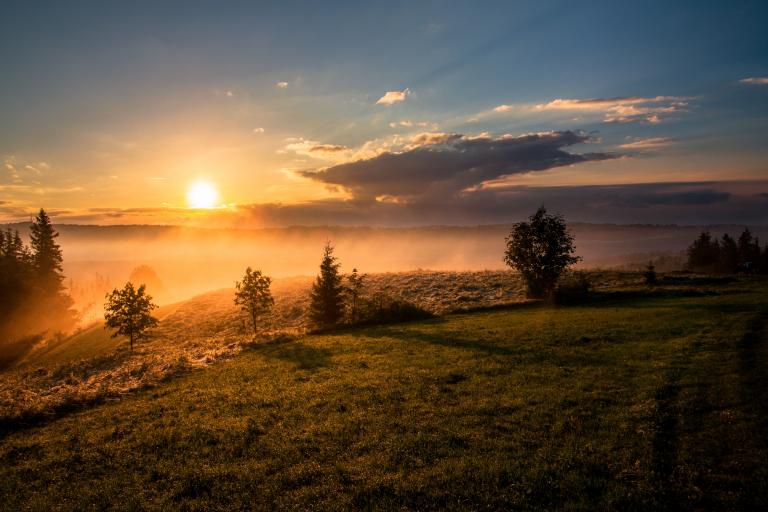
Goddess of Creation
Usas is also described as weaving the dawn into a kind of a tapestry, she thus is probably a goddess of crafts and domestic work.
‘The weaver [fem., sc. Dawn] has rolled up again the spread-out (fabric); in mid activity, the craftsman has laid down the work. (RV 2. 38. 4).’
Her Sister, the Night’s garments are sometimes seen as the night sky. The whole celestial drama is seen as an act of weaving:
With your best (steeds) you (Surya) come, tearing apart the weft, pulling down the black garment, O god. (4. 13. 4)
Usas is called bhúvanasya pátnı meaning ‘mistress of creation’ (RV 7. 75. 4).
Usas is called Prija Divah meaning the ‘Beloved [Daughter] of Dyeus’. Priya comes from the same root word as *Frija who gave her name to the Norse goddess of domestic crafts Frigg.
Brighid shares these qualities as well and includes wider crafting motifs. But we can tell from this comparison, that her association with the work of the farm was of the oldest and Proto-Indo-European by our standards.
A Russian folk tale speaks of a Smith god Telyavelik who forges the sun daily and sets it up in the sky. Latvian songs sing of a similar smith who makes a gold girdle for his sister, the Daughter of the Sun. Brighid also has a Crios Bhrighte or Brighid’s Girdle. But as a Dawn Goddess and the Daughter of Dyeus(Deiwos in Proto-Celtic), we could see the potential of her as forging the sun daily.
Daughter of Dyeus
Usas was considered the Daughter of Dyeus: Divó duhita. This corresponds to the Baltic Dievo dukrýte, the Lithuanian phrase for the sun goddess, who sometimes absorbs the dawn’s qualities. And a reconstructed Greek deity *Hawos has Diwós thugáter as a title(West, 2010).
The goddess that became Eos seems to have lost her daughterhood to the Greek Dyeus, Zeus, but she was left with the title δiα meaning ‘of Zeus’. Instead, Helen takes her place as the Daughter of Zeus.
M.L. West says that only the Dawn is considered the daughter of the Indo-European Sky-Father *Dyeus, and Dawn and Night are considered sisters not by relation but because of their alternation(West, 2010). The goddess of Night would not be the daughter of Dyeus who is in effect the God of Clear and Stormy Skies because he ultimately is a god of daytime blessings.
In the Ossetic Nart tales, Soslan courts a golden deer that is seen at dawn in a reed-bed who is named Aziruxs meaning ‘Strong light’, the daughter of the Sun. She is abducted and freed by the hero. This is parallel to the tale of Angus’ freeing Bride.
Lithuanian songs sing that the Morning star ignites the fire of the Sun who is called the Daugther of God. As we will see, Dyeus is the quintessential God.
There are generally two pairs of gods at play here, the Sky-Father and the Dawn or the Solar God and his Daughter. In some cultures, especially in Baltic texts, these pairs seem to have merged at some point. It gets confusing to see what happened by looking at the data.
The Lithuanian word for fire is ugnis, parallel to Vedic agníhignis and Slavonic ogonı, but in this one case, Ugnis is feminine and was worshiped directly as Gabija, sventa Gabija. A sixteenth-century prayer to the heart calls her ‘Gabie Deuaite’, that is, ‘Fire, daughter of God’, who is also mentioned as Polengabia or Pelengabia, ‘Hearth-fire’ and sventa Ponìke, ‘holy Mistress’. The Latvian counter-part is the same goddess who became Ugnis’ mate. She is ‘the Mother of Fire’. Gabija also has a mantle and her name means to wrap stemming from words for grabbing *gabati.
Brighid’s father is the Dagda who is a god that seems to be both *Dyeus and *Perkwunos and has fire and lightning associations himself. The joining of the day god of heaven and the thunderer also happened in Rome and Greece so is a common mutation in Indo-European cultures, seen in Zeus, Jupiter, and Perun. Dagda’s name is derived from Dago Deiwos meaning ‘Shining God’. Shining often underwent a cultural syntactical transition to straddle the meanings of both bright and skill, this is still with us today when we call someone brilliant for being clever. So Dagda becomes the ‘Good God’. Saint Brighid’s father Dubthach (Dark) and grandfather Dallbrónach (Dark and gloomy) are similarly named after storm qualities. She has hearth associations as Bride and has names denoting sacred fire.
Sun as Sky-lamp
The sun is often seen as a lamp, and West insinuates that the word for sun became synonymous with lamp and not the other way around. The Middle Indo-European word *s.h2w.l ‘sun’ is the reconstructed root of the Scottish word Súil from hymns in the Carmina Gadelica.
This can be seen in Charm 277(Vol III) in the phrase Sùil Dhé mhóir meaning ‘eye of great god’. Dhe here comes from *deiwos, earlier *Dyeus, of which his oldest epithet was ‘great’. Similarly, Dagda has this epithet when referred to as Dagda Mór.
Considering that Dagda can make the sun stand still, it fits that *s.h2w.l paints the word súil here are related to Luwian ‘Sehuwa-a-al’ ‘siwaal’ or ‘lamp’ which also relates to the Balto-Slavic Saule Gothic sauil. Greek sources have λαμπα´ referring to the ‘the pure lamp of the sun’ and ‘the god’s lamp’. English sources refer to the sun as ‘Godes candel’ or ‘God’s candle’. This is an abstraction of a belief that the sun was the ‘the lamp of Dyaus’.
It’s as if the summer solstice is when Dyeus hangs up his lamp and the winter solstice is when he sets it down to copulate with a figure of the land in a sacred place. Greek playwrights referred to the sun as ‘eyelid of golden day’, ‘this holy eye of the lamp’, ‘the tireless eye of the air’. Norse considered the eyes ennis sólir or ‘suns of the forehead’. Ovid’s sun god is ‘the eye of the world’ and Armenian calls the sun aregakn meaning ‘the eye of the sun’.
In addition to the version of the tale involving Dagda and Boannd at Elcmar’s(Nuada Necht’s) Brug in the Boyne Valley, The Dinshenchas gives us an altogether different account from Dowth as follows:
His sister came to him, and told him that she would stay the sun’s course in the vault of heaven, so that they might have an endless day to accomplish their task. The maiden went apart to work her magic. Bressal followed her and had union with her: so that place is called Ferta Cuile from the incest that was committed there. Night came upon them then, for the maiden’s magic was spoilt. ‘Let us go hence,’ say the men of Erin, ‘for we only pledged ourselves to spend one day a-making this hill, and since darkness has fallen upon our work, and night has come on and the day is done, let each depart to his place.’ ‘Dubad (darkness) shall be the name of this place for ever,’ said the maiden. So hence are Dubad and Cnoc Dubada named. (Murphy, 2019)
The inner walls of Brug na Boyne and the Brug at Dowth both only light up during the winter solstice. Is it a coincidence that these are the two accounts we have of the sun standing still or that they both involve a King having sex with a land-figure? Murphy as spent time at Downth during the summer solstice and says that the sun sets so high in the sky that there is an endless night twilight for a few weeks after Jun 21st. He says this makes the ‘endless day’ reference about the summer solstice.
All of this relates appropriately to the topic of a dawn goddess who is the daughter of *Dyeus. This is true for eggs as well because they are direct representations of the sun that the dawn bears witness(midwife) to or is directly born herself. While they can be a sign of fertility, their true nature seems to be the offspring of Eostre as a hare who births the sun.
Oxen & Cows
Both Brighid and Usas have two Oxen. In some tales Usas yokes two oxen that pull the dawn while the Sons of Dyeus, as the Asvins in India or Dioskouri in Greco-Roman lore, pull the sun. Brighid will only drink from the milk of a cow that is white with red ears, also a symbol of the Vedic dawn. And Usas’ milch cows are specifically symbolic of the reddish clouds at dawn and dusk, not coincidentally the time which cows give their milk. It’s said about some Irish cows that they are so used to milking songs that they will not give their milk until the singing begins, a power most likely attributed to the magic of Brighid.
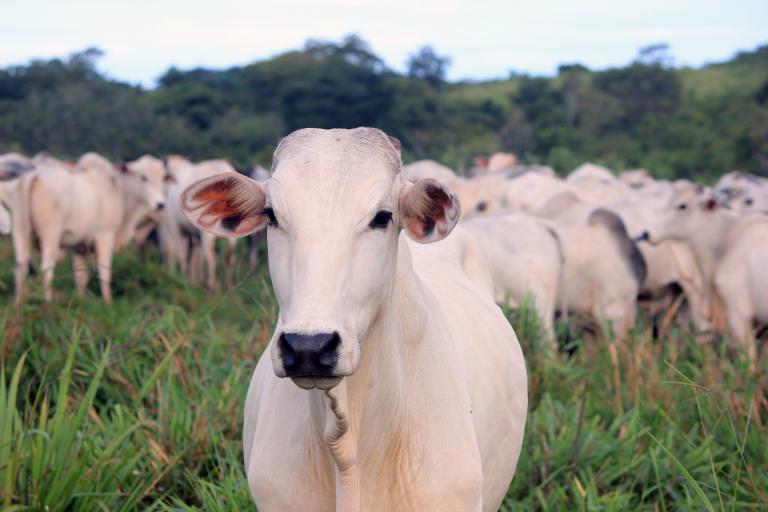
In Roman cosmogony, 350 white cows and 350 black cows roamed the sky, one for each calendar day excluding some 15-day intercessory period(West, 2010). These cows move pie Dievin¸a namdurem or nama durım meaning ‘by the doors of the house of God’, which is continued in the Vedic dva´rau Diváh’ meaning ‘doors of Heaven’, which the Dawn opens with her mantle of light(RV 1. 48. 15, cf. 113. 4).
Presumably, she does this to let the cows and the sun through the π3λαι ο1ρανο, ‘gates of heaven’ or the gates of ‘Day and Night’ according to the Greek philosopher Parmenides(West, 2010). In this same way, the Goddess Dike regulates Helios. Ovid and Quintus of Smyrna also had Dawn opening heavenly gates or doors in their tales.
‘Dawn and Night are as a cow good for milking: in one day I measure out my song, in different-colored milk at that (one) udder’(Rgveda, 1. 186. 4). West points us to further hymns (3. 55. 12)(7. 41. 7) and the Greek phrase νυκτ: qµολγ which all represent day and night as cows themselves. Like this theme, the Vedic dawn was thought to open the doors to the cow-pen of darkness (Rgveda 4. 51. 2).
Parmenides claimed to have personally come out of the doors of heaven and was shown while on a chariot that Day and Night moved through the door pushing “veils back from their faces”(West, 2010). West points out that this is like Usas uncovering her udder, and Brighid who also born at dawn in a doorway at sunrise.
Mumming & Dancing
Groups of young girls celebrating spring or summer are common.
In Ireland, groups of young girls go from house to house as mummers carrying symbols of Brighid in the form of dolly, cross, and shield. Their captain was a “Bridget” who embodied the Saint. Often these girls were named after her because as we’ve mentioned, she’s a paragon. They would present the dolly called the Brideog to neighbors to be decorated while passing out solar symbols.
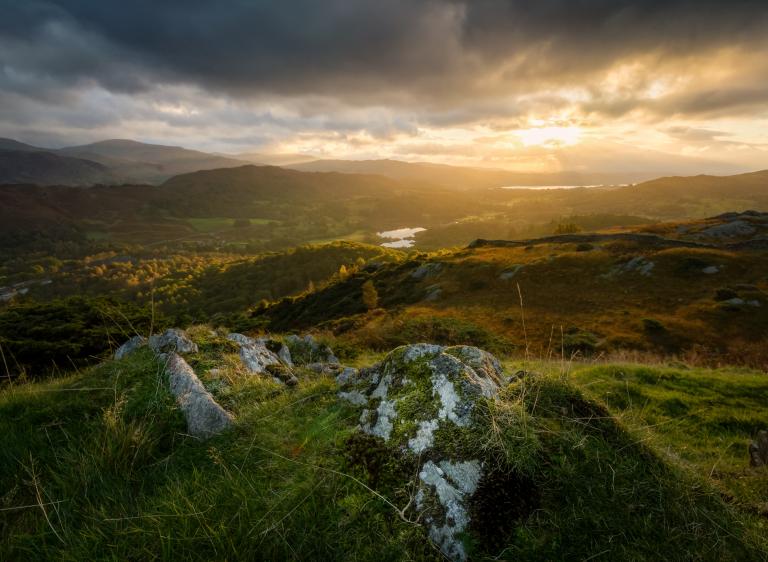
Aos a form of Aotis was rerecorded as an object of a similar custom in the first PMGF by Alcman of Sparta at their spring festival. These girls were also led by a captain-like girl called Agido, and their song praises her ‘light’ because it ‘is bearing witness to us that the sun is shining’. M.L. West uses this to picture her as torch-bearing, while I think solar symbol bearing suffices. He also supposes that she stood on the watch for the first light of the dawn as was done in the Scandinavian mountains of Thule. They then sing ‘my chief desire is to be pleasing to Aotis, for she has become our healer of toils’.
Asiatic Dawn Goddesses have no such custom, but mummers singing and dancing might be related to an older motif of dancing the winter away. But dancing, jumping, and hopping are also practiced at springtime and midsummer festivals according to the Indologist Leopold von Schroeder(West, 2010). Lucian recorded Indians greeting the sun with dance imitating it.
Usas casts her garments nrtur iva ‘like a dancer’(RV 1. 92. 4) who has “no brothers” and “she uncovers her breast as a cow her udder”(West, 2010). She smiles sensually and is not a bashful deity. Likewise, Eos is insatiable and “has χορο, dancing-places”(West, 2010).
Anglo-Saxon and Germanic lore believes that the sun dances on Easter morning according to Grimm and people would wake before dawn to watch it, while in Baltic countries they did this on Midsummer morning according to Arische Religion. Scandinavian lore holds that Loki is planting his oats when the spring sun dances. Modern accounts of a dancing or pulsing sun have been recorded though I could not find a meteorological explanation.
Ó hÓgáin says that the custom persisted in Ireland as well. The custom is fully Christianized as the sun that dances are the ‘true light of the world’, is a symbol of Jesus, it dances with the joy of the Resurrection. We know this custom isn’t transferred later like Ó hÓgáin thinks because we’ve illustrated that these are more likely systemic pre-migration traits spread earlier rather than later. People would watch the Easter dawn dance from hilltops or in the reflection of a well or a tub of water(Ó hÓgáin, 2002).
The Cailleach in Scotland as winter is repelled by mummer’s dancing. She is also named Boí ‘Cow’ in some tales, potentially opening up speculation toward linking her with the night time cows and evening milking. As the Loathy Lady, she begs King Arthur for a kiss(Monaghan, 2008), another motif held by Baltic Winter hag figures like the Bohinya(Slavapiorun, 2019). The Bohynja is Baba Yaga and she throws her breasts over her shoulder and onto her back as the Bean Nighe does. She’s also called Demispats ‘Mistress of the house’ and offerings to her are given to standing stones like the Irish Gruagach and Scottish Brownie.
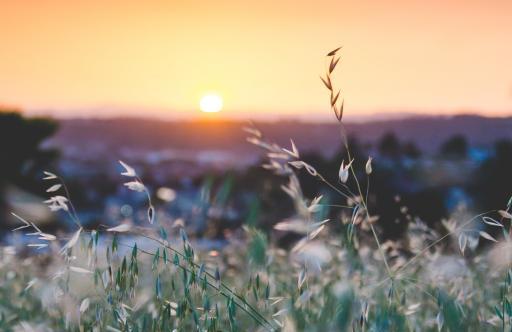
Finally, dancing is wholly appropriate to the fire god, but especially fire gods who are related to the sun and thus its spring dancing.
Gold Color & Sun Cakes
Eos was the saffron-robbed and gold-sandaled. For Aurora, flaua or dawn colored cakes were prepared. Western Slavic customs involve circular cakes given to the sun in worship and they were called ‘little suns’. In Brittany, solar food for springtime appears to be crepes. In Ireland, round bannocks or apple cakes might represent the sun.
Radiant flame of gold is what Brighid is called in the Geneology of Bride(). The yellow dandelion is called beàrnan Brìghde is Scotland, linking her to the flower. These flowers are made into a tea and used for healing(Daimler, 2016).
The dawn gives light. West says that in χρυσο´θρονο and λα´µποντα that “we have an old root verb whose Vedic cognate bha¯ is regularly used of Usas or the Usasah(West, 2010). We can see this in bhanty Usásah ‘the Dawns shine’. The Usasah are not Dawn and Night, but the single Usas as a series of infinite youthful births. The Avestan example is usi . . . ba¯mya meaning ‘shining dawn’.
In Greek lore, the Homeric mοδοδα´κτυλο means ‘rose-fingered Dawn’. In Vedic hymns, Usas is híran yapani, híran yahasta which means ‘golden-handed’ (West, 2010).
Bacchylides’ dawn becomes the ‘gold-armed Dawn’ while Usas is híran˙ yavarn˙ a¯, ‘gold-colored’ (3. 61. 2; 7. 77. 2) and Ovid’s dawn calls the dawn, ‘the golden-yellow one’(West, 2010). Saule and her daughters are each a zelta jumpravin, or a ‘golden maid’.
East Dwelling
Leinster is the eastmost kingdom in Ireland and Brighid is the tutelar guardian of that Kingdom. It is the place of the Saint’s first burial before she was moved to the burial place of Saints Colmcille and Patrick. It is the place of her prior pagan grove and later Christian convent. The hearth of the Brigadine nuns is the hearth of the nation. The house Brighid presumably kindled the house-fire in was in Leinster.
Eos’ previously mentioned dancing places are in the eastern sky. Her house is located there. The Avestan eastern mountain Usˇidam was meant ‘dawn-house’. Saule also has a house in the east, but sometimes it is considered the house of God(*Dyeus).
Spread Hands
Eos’ references as rose-fingered are the rays of the dawn that establishes them as spreading out. The Vedic suangurí ‘with good fingers’ describes many goddesses but means rays when it is applied to the sun, Savitar who is also ‘broad-handed’. Gabija seems to have a Sanskrit term related to her in gábhasti in meaning ‘hands’. It could be that Gabija is also open-handed so that she can wrap whatever in her mantle.
The doors to Brighid’s parish church in Kildare are knobbed with two spread hands with closed fingers(Brideson, 2016).
Winter Hag as Dawn’s Night Counterpart
If we simply look to Frau Holle known as Perchta in England, we already see three IE cognates to a winter hag night goddess. Like Bride and the Cailleach that becomes Bride(more probably a ‘brigit’ as maiden using the name as a paragon), Frau Holle is both a Hag and a Maiden. All of this comparative mythology lends support to a direct interpretation of the Owl as the form of the Cailleach as the goddess of Night, because the word cailleach-oidhche for owl means ‘night-hag’.
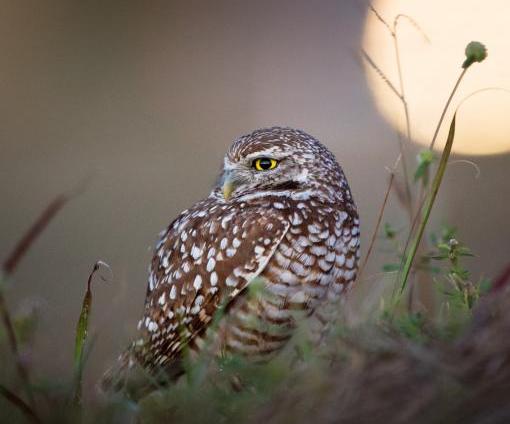
Remember that Usas bore the Maruts in the earlier hymn we shared? The Cailleach is associated with 8 storm hags and these may ride the black clouds like the cows of the night that we’ve previously visited. Brighid’s Oxen and dawn-cows would then be for us the unstormy cumulonimbus cloud-cattle of the Dawn. While the Maruts are goodly inclined to humans, the Cailleach’s storm-hags are not.
Some versions of the tale of Bride and the Cailleach conclude the story with the Cailleach turning into Bride once she drinks from the Well of Youth. The Celtic belief in Light and Darkness trapped in an alternation cycle whose two opposing halves are forced together to work with and conflict with one another would also make the Cailleach and her dark veil the Goddess of Night. Maybe winter only occurs because Night becomes stronger than Dawn’s ability to birth the sun. In the story of the Cailleach imprisoning Bride, she is made to scrub the Cailleach’s dark mantle.
There is also a Latvian riddle: ‘Two sisters who are at odds; one appears, the other runs away; one is white, the other black’. When we consider that Usas has a foster-sister also named Usas and is the Goddess of Night who whose cloak is dark, we can see the further linkage to the Cailleach. As Usas, the sisters-in-role are seen in conflict, never being together in the same house because dawn drives her sister away (Rgveda 1. 92. 11, cf. 123. 7; 10. 172. 4).
In the lore surrounding the Cailleach, she laments that she used to be young and entertain kings, therefore, like Brighid, she is a Sovereignty goddess. In Da Derga’s Hostel, a similar hag, probably her, came to Conaire right before his death as the hostel burned. It’s suspected that she came to claim her right to take him for breaking his geasa.
*Aeusos
In the course of studying this topic, I noticed several words that were applied to Usas that seem to hint at a connection with words that are related to the Hearth Goddess. For instance, Usas’ clothes are bright and shining. In Sanskrit, she is Bhadra vástra and in Greek, she is σθHτα φαεινν; both meaning ‘clothed in light’. West points out that *bha and *wes each are in both languages for the same title.
The word *wes means clothing in PIE. It isn’t directly related to Ceiswer Serith’s reconstructed hearth-fire goddess Wéstyā(Serith, 2009), but in Tocharian, it means Spring(Mallory, 2009). I think this may tie the spring to the land clothing itself in growth rather than snow and decay and Usas clothing, to Westya and domestic work of making clothing. This is from *h2ues- meaning ‘to dwell’ originally meaning to ‘stay’.
Another word is related to it that has the vowels flipped *haeust(os) and *haeust(e)ro that means ‘east’ from *haeus which is ‘dawn’ (Mallory, The Oxford Introduction to Proto-Indo-European and the Proto-Indo-European World ). Adam Hyllested says “Most full-grade derivatives in the individual IE languages reflect *h2eus-, but Sanskrit also have vastar, and all of the Celtic forms reflect *h2ues-…”(), which he suggests is the original form for ‘stay [at a place]’. There is suspected relatedness between it and the following words: the PIE *ueis- ‘flow; bleed’, Proto-Urgalic *wirka ‘trap, loop’, PIE *ueis-go- or *ueis-ko- ‘loops, snare’. It makes sense that staying somewhere willfully is a different but related word for being trapped somewhere. Or it could be that the dawn stays in the east and so *haeus and *haues orbit as different words around the same idea.
In either case, Segen says “This Goddess is so important that her name has several applications.(Segen, 2015)” and goes so far as to say that the name *aeusos was, before *Dyeus, “a general word for ‘a god, any god,’ all share this name.”(Segen, 2015) This points us to the central doctrine that people might feel but can’t articulate: the first proto-Indo-European god was the hearth-fire and was then equated with the dawn as the sky’s hearth, and then Dyeus is named after her because the fire down here must be the daughter of the fire up there. When lightning strikes she is born as wild-fire. The brightness coded into the name carried into most of the names of the gods. It’s even possible, she says, that the titles that come from like Norse Aesir, Vedic Ashura, and Old English Ôs Dyeus are ultimately rooted in Aeusos.
Segen speculates about Esus, whose identity is controversially unknown, stemming from this god. Further, she makes a case for the splitting of this god with the hearth god when an intrusive and probably Mediterranean-sourced ‘t’ is introduced making *Aeusos into Hestia and Vesta.
For any good theory to be taken seriously and on the path to being proven, it must predict the future and explain past events and connect to what other people are doing. Take, for instance, the fire and house spirit of Germanic dwellings known as the Lokk. The Lokk is suspected to be a continuation or diminishment of Loki, much like the Leprechaun is suspected as Lugh Préachán. Well, what does his name mean? One of the proposed etymologies is that it goes back to *lugo > *laugiz or ‘flame, fire, lightning’. Another one is that its root is *luką which means ‘lock, opening, hole’ from *lewg- which means ‘to bend or turn [a withe]’. A withe or braid of twigs can be used to start both friction-fire and trap someone and this in meaning is related to *ueis-go-, again ‘loops, snare’.
This concept of a dwelling seems best understood through a filter that this is the place you’re tied to. This idea cannot be untangled from the hearth goddess and the fire spirits, who are also the genius loci that are tied to a place. Fire is related to both turning and bending twigs or sticks. In India, the fire drill-stick that kindled the fire was called the Pra Mantha, which gives its meaning to Sanskrit pramathyas or ‘thief’. Stealing requires forethought, which is what Prometheus’ name means. Stealing is what he did and was bound. Loki also stole fire from the gods and was bound.
Since proto-Indo-European is reconstructed, I doubt it is complete and even if it was, how blurry and out of focus is it compared to the real thing? Nevertheless, it explains what we see better than any other theoretical things we deal with.
What does this mean?
Is Dawn the Sun? Only on the horizon. Just like Agni is terrestrial fire, Usas is the atmospheric fire, and Surya is the Sun in the Sky; Aed is the fire on the land, Brighid births the Sun as it rises and Grían pulls it Sun in the Sky. The sun is the lamp of Dagda which when with Boann, he can make stand completely still, which happens specifically at the Winter Solstice when Bride is captured. Never is Dagda directly the sun as we’ve seen, he’s the day god representing clear and stormy skies, roaming and striking with his club, hanging the sun up or setting it down. The Cailleach is a part of Brighid but also separate and unrelated. A goddess of Giamic and Otherworldly forces. Winter happens because the Night god has gained the upper hand. She is the Winter Hag because she controls the Forces of Night.
We can also conclude that several of the later Imbolc Traditions are probably pagan. At this point, a large shadow doubt is cast on their origin as a creation of the Church.
If we conclude that Brighid and these other deities truly have a connection, then this information above will also lead us to conclude that Brighid’s brat and related traditions are Proto-Indo-European.
Though the sun is lowest at the solstice, the latest dawn is 15 days later. We can link this number to the days of the year subtracted to arrive at Aurora’s 350 cows. So the dawn really is imprisoned.
Confidently then we can date Brighid’s breaking free from the Cailleach’s bindings right at that time. So from Jan 5th to the epiphany, Brighid is making he way back to the otherworld. The twelve days of Christmas is looking like it was a half-moon period. Blasting flowers along the way, she’s looking for a place to rest and recover.
What we can look forward to in six weeks is the Dawn goddess finally winning against the Night-Hag near Auld Wives day in March, giving a Celtic and IE lore basis for equinox celebrations. This occurs sometimes on March 25th, 29th, or Saint Patrick’s day.
If you enjoyed this post, please buy me a beer.
Sources
Brideson, Jane. “Brighid Returns from the Otherworld.” The Ever-Living Ones, 31 Jan. 2016, theeverlivingones.blogspot.com/2016/01/brighid-returns-from-otherworld.html.
Daimler, Morgan. Brigid: Meeting the Celtic Goddess of Poetry, Forge, and Healing Well. Moon Books, 2016.
Danaher, Kevin. The Year in Ireland: Mercier Press, 1994.
HÓgáin Dáithı́ Ó. Irish Superstitions. Gill & Macmillan, 2002.
Lehmann, Winfred P., et al. A Gothic Etymological Dictionary: Based on the Third Edition of Vergleichendes Wörterbuch Der Gotischen Sprache by Sigmund Feist. Brill, 1986.
Mackenzie, Donald A. Scottish Wonder Tales from Myth and Legend. Dover Publications, 1917/1997.
Mallory, J.P, and D.Q Adams. The Oxford Introduction to Proto-Indo-European and the Proto-Indo-European World. Oxford University Press, 2009.
Monaghan, Patricia. The Encyclopedia of Celtic Mythology and Folklore. Checkmark Books, 2008.
Murphy, Anthony. “Mythical Ireland: Myths & Legends: The Dagda and Cosmology in the Early Stories of Brug Na Bóinne.” Mythical Ireland | New Light on the Ancient Past, 1 Dec. 2019, mythicalireland.com/myths-and-legends/the-dagda-and-cosmology-in-the-early-stories-of-brug-na-boinne.
Segen, Helga. “Aeusos, a Proto-Indo-European Goddess.” Proto-Indo-European Religion, 25 July 2015, piereligion.org/aeusos.html.
Serith, Ceisiwr. Deep Ancestors: Practicing the Religion of the Proto-Indo-Europeans. ADF Pub., 2009.
Slavapiorun. “Reassessment #3 Ladies of the Land and Fate in European Folklore.” Slavicpaganfacts, 6 Dec. 2019, slavicpaganism.home.blog/2019/11/17/reassessment-3-ladies-of-the-land-and-fate-in-european-folklore/.
West, Martin Litchfield. Indo-European Poetry and Myth. Oxford University Press, 2010.


